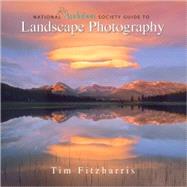
Tim Fitzharris is a critically acclaimed photographer known by his colleagues for his regular column in Popular Photography and Imaging magazine. He is the author of 25 books, including National Audubon Society Guide to Nature Photography, Rocky Mountains: Wilderness Reflections and Big Sky: Wild West Panorama. He lives in Santa Fe, New Mexico.
| Introduction: The Earth, our planet, our home | |
| Outfitting for the Landscape | |
| Camera Systems | |
| Professional results from cameras and tripods | |
| Landscape | |
| Optics Lenses for scenic subjects and how to use them | |
| Logistics in the Field | |
| Transporting, accessing and protecting equipment in the field | |
| Shooting Fundamentals | |
| Exposure | |
| Making reliable exposures in difficult situations | |
| Aperture and Shutter | |
| Speed Controlling image detail with depth of field and exposure time | |
| Creating an Image | |
| Illuminating the Scene | |
| Proactive lighting techniques | |
| Composition | |
| Basics Fundamental principles of picture design | |
| Art of the Possible | |
| Adapt your shooting schedule to natural conditions | |
| Expressing Perspective Techniques for recording the third dimension | |
| Photogenic Opportunities Recognizing the potential of a landscape setting | |
| Spectacular Settings | |
| Bonfires of Autumn Capturing the rich color of the woodland palette | |
| Cascades and Waterfalls Interpreting the beauty of flowing water | |
| Radiant Reflections Recording mirror-like reflections in lakes and ponds | |
| Dramatic Dunes Procedures for great sand dune photographs | |
| Sunrise and Sunset Seizing opportunities at the magic hour | |
| Oceans of Light Recording the changing moods of the shoreline | |
| Floral Wilderness Capturing the beauty of meadows in bloom | |
| Twilight Time Heavenly light when the sun is below the horizon | |
| Wide View Panoramas Shooting and stitching multiple captures of a scene | |
| Captivating Clouds Dynamic landscape imagery hangs in the air | |
| Digital Processing | |
| Digital Darkroom Equipment Storing images in the field and processing them in the studio | |
| Preparing Images for Presentation Professional art print, website or print media display | |
| Resources | |
| Table of Contents provided by Publisher. All Rights Reserved. |
The New copy of this book will include any supplemental materials advertised. Please check the title of the book to determine if it should include any access cards, study guides, lab manuals, CDs, etc.
The Used, Rental and eBook copies of this book are not guaranteed to include any supplemental materials. Typically, only the book itself is included. This is true even if the title states it includes any access cards, study guides, lab manuals, CDs, etc.